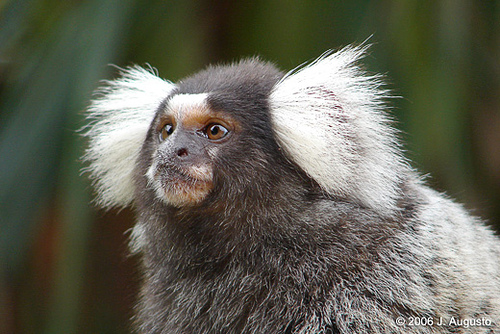Full Grown Marmoset Monkey, The full grown marmoset monkey is a captivating and unique primate, often admired for its small size, expressive face, and curious nature. Native to South America, marmosets have become increasingly popular among exotic pet enthusiasts. However, caring for a full grown marmoset monkey requires a deep understanding of its biology, behavior, and needs.
What Does a Full Grown Marmoset Monkey Look Like?
A full grown marmoset monkey is relatively tiny compared to other primates. On average, these monkeys grow to about 7 to 9 inches in body length, with a tail that can be longer than their body, adding another 10 to 14 inches. They typically weigh around 300 to 500 grams (about 0.7 to 1.1 pounds). Despite their small stature, marmosets are agile climbers and very active animals.
There are several species of marmosets, including the common marmoset (Callithrix jacchus) and the pygmy marmoset (Cebuella pygmaea), the latter being the smallest monkey in the world. Each species may vary slightly in size and coloration, but they all share the signature large eyes, sharp claws (instead of nails), and long tails.
Behavior and Personality Traits
Once a marmoset reaches full maturity—usually around 1.5 to 2 years of age—its personality traits become more distinct. Full grown marmoset monkeys are:
- Highly social: In the wild, they live in groups of up to 15 individuals. If kept as pets, they require constant companionship and mental stimulation.
- Territorial: They may mark their territory with scent glands, which can become a concern in a domestic environment.
- Vocal and expressive: Marmosets use a wide range of sounds, facial expressions, and body language to communicate.
- Intelligent and curious: They love exploring and can become bored easily without enrichment.
Caring for a Full Grown Marmoset Monkey
Owning a full grown marmoset monkey is a serious commitment. These animals have complex needs that go far beyond basic food and shelter. Here are key aspects of their care:
- Diet: Marmosets are omnivores. A balanced diet should include fruits, vegetables, insects, and specialized primate food. Calcium and vitamin D3 supplements are often necessary to prevent metabolic bone disease.
- Habitat: Their enclosure must be large, vertical, and enriched with ropes, branches, and platforms. Marmosets are arboreal, meaning they spend most of their time in trees.
- Social Needs: A single marmoset may suffer from loneliness and stress. Ideally, they should be housed in pairs or groups unless the owner can provide continuous interaction.
- Veterinary Care: Exotic animal vets are essential. Regular health checkups and vaccinations can prevent illnesses.
- Legal Considerations: In many places, owning a marmoset requires special permits or may be prohibited altogether. Always check local laws before acquiring one.
Challenges of Owning a Full Grown Marmoset Monkey
While these monkeys can be affectionate and entertaining, they are not ideal pets for most people. Full grown marmosets can exhibit aggressive behavior, especially during mating season or when stressed. They may bite, scratch, or become possessive of their space or caretaker.
Moreover, their long lifespan—up to 12 to 18 years in captivity—means a long-term responsibility that includes not only care but also financial and emotional commitment.
Conclusion
The full grown marmoset monkey is a fascinating creature with unique needs. Whether admired in the wild, cared for in a sanctuary, or kept by experienced exotic animal handlers, these primates deserve respect and proper care. Understanding their behavior, biology, and social structure is the first step toward ensuring their well-being and happiness. If you’re considering one as a pet, make sure you’re fully prepared to meet the challenges that come with owning such a complex and intelligent animal.
You Might Also Like These:


